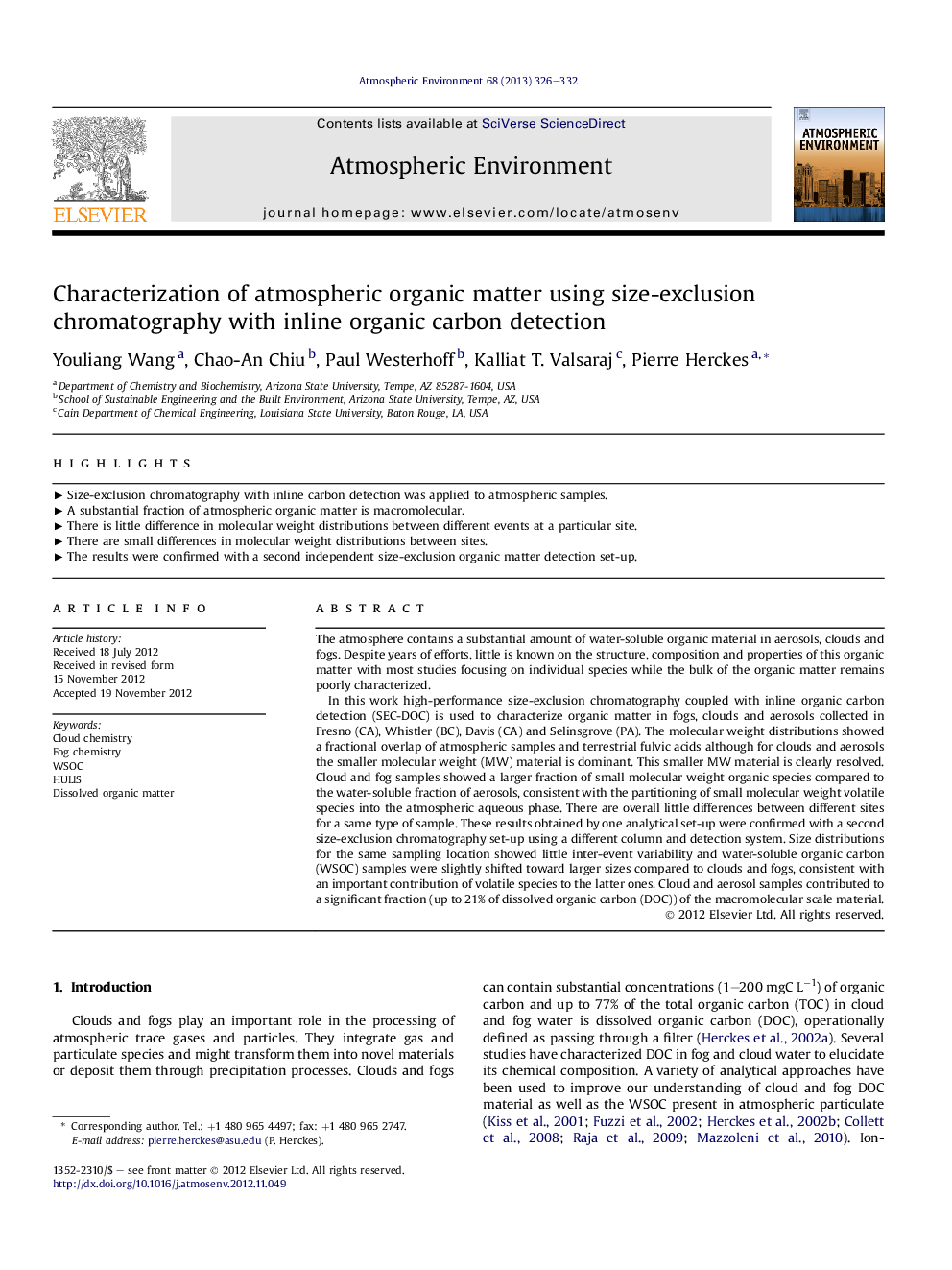| Article ID | Journal | Published Year | Pages | File Type |
|---|---|---|---|---|
| 4438452 | Atmospheric Environment | 2013 | 7 Pages |
The atmosphere contains a substantial amount of water-soluble organic material in aerosols, clouds and fogs. Despite years of efforts, little is known on the structure, composition and properties of this organic matter with most studies focusing on individual species while the bulk of the organic matter remains poorly characterized.In this work high-performance size-exclusion chromatography coupled with inline organic carbon detection (SEC-DOC) is used to characterize organic matter in fogs, clouds and aerosols collected in Fresno (CA), Whistler (BC), Davis (CA) and Selinsgrove (PA). The molecular weight distributions showed a fractional overlap of atmospheric samples and terrestrial fulvic acids although for clouds and aerosols the smaller molecular weight (MW) material is dominant. This smaller MW material is clearly resolved. Cloud and fog samples showed a larger fraction of small molecular weight organic species compared to the water-soluble fraction of aerosols, consistent with the partitioning of small molecular weight volatile species into the atmospheric aqueous phase. There are overall little differences between different sites for a same type of sample. These results obtained by one analytical set-up were confirmed with a second size-exclusion chromatography set-up using a different column and detection system. Size distributions for the same sampling location showed little inter-event variability and water-soluble organic carbon (WSOC) samples were slightly shifted toward larger sizes compared to clouds and fogs, consistent with an important contribution of volatile species to the latter ones. Cloud and aerosol samples contributed to a significant fraction (up to 21% of dissolved organic carbon (DOC)) of the macromolecular scale material.
► Size-exclusion chromatography with inline carbon detection was applied to atmospheric samples. ► A substantial fraction of atmospheric organic matter is macromolecular. ► There is little difference in molecular weight distributions between different events at a particular site. ► There are small differences in molecular weight distributions between sites. ► The results were confirmed with a second independent size-exclusion organic matter detection set-up.
